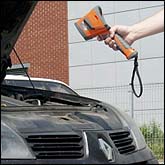 According to an article last week in Bloomberg Businessweek, the Pentagon is seeking to add uncooled thermal imaging devices to the United States Munitions List. Putting that technology on the USML, as opposed to the Commerce Control List administered by the Bureau of Industry and Security (“BIS”), would require licenses for all exports of such technology and would prohibit exports to countries, such as China, subject to U.S. arms embargos.
According to an article last week in Bloomberg Businessweek, the Pentagon is seeking to add uncooled thermal imaging devices to the United States Munitions List. Putting that technology on the USML, as opposed to the Commerce Control List administered by the Bureau of Industry and Security (“BIS”), would require licenses for all exports of such technology and would prohibit exports to countries, such as China, subject to U.S. arms embargos.
Thermal imaging devices typically have to be cooled to prevent them from being “blinded” by their own internal circuitry. This results in more expensive devices as well as devices that need to warm up (or more accurately cool down) before they can function. Uncooled thermal imaging, while offering lower resolution under current technology than cooled thermal sensors, are less expensive and easier to operate. Uncooled thermal imaging has a number of non-military applications, such as collision-avoidance cameras used in new automobiles and investigation of heat leaks in homes. A contractor investigating leaks from exterior walls into my house used one. (Useless application: the camera viewfinder showed thermal paw prints left by my dog several minutes earlier!)
As the Bloomberg article points out, uncooled thermal imaging devices are produced by companies outside the United States, including Ulis in France; SemiConductor Devices in Israel; NEC Avio Infrared Technologies Co. in Japan; and Zhejiang Dali Technology Co. in China. The uncooled thermal imaging camera used by my contractor was made by Sonel in Poland (a similar model of which is pictured at right.)
The proposal to add uncooled thermal imaging to the USML is currently undergoing interagency review. A revised USML including that technology could appear as early as this month according to an anonymous DOD source cited by the Bloomberg Businessweek report.
 Permalink
Permalink
Copyright © 2012 Clif Burns. All Rights Reserved.
(No republication, syndication or use permitted without my consent.)

 Posted by
Posted by  Category:
Category: 

